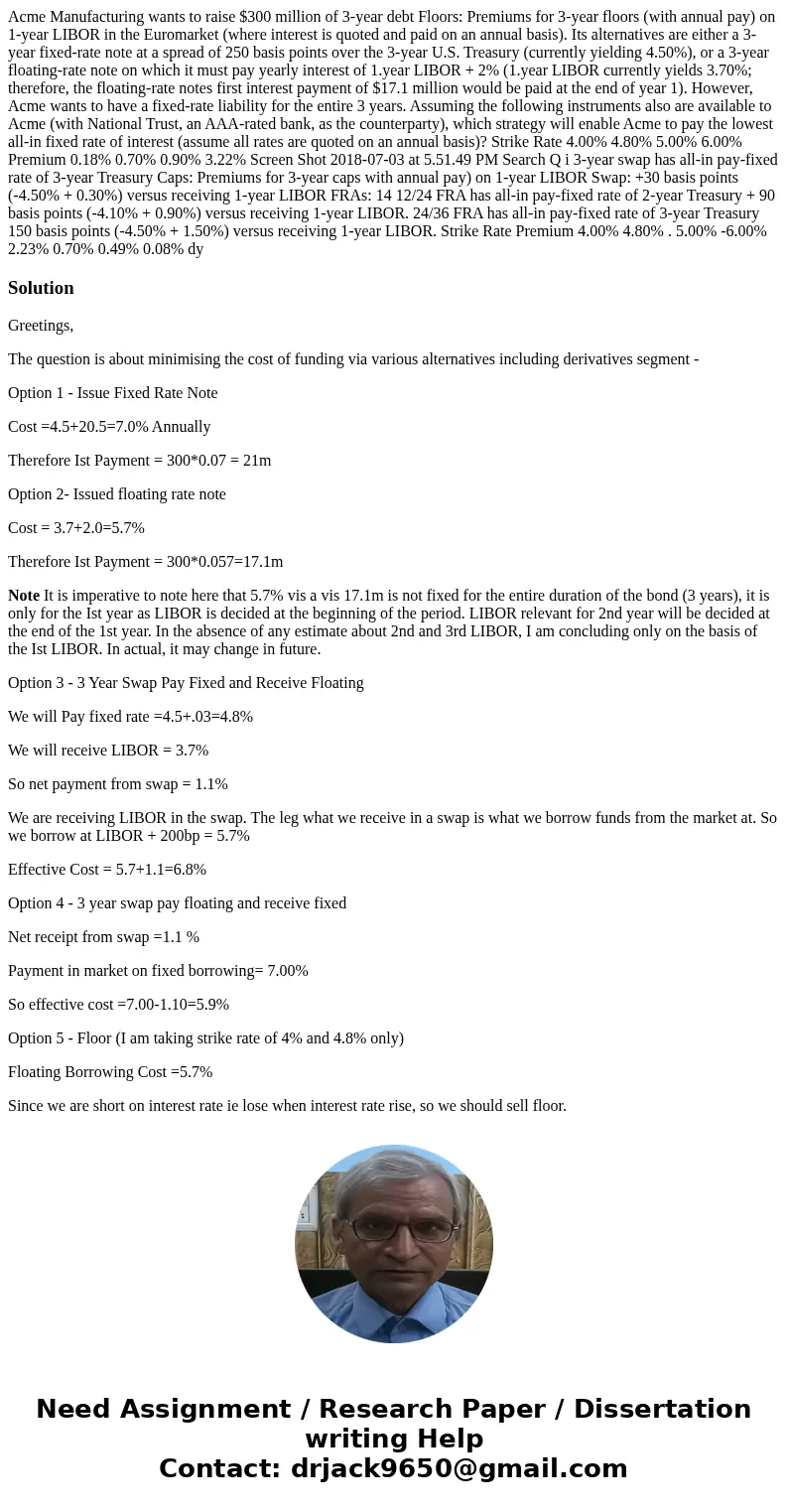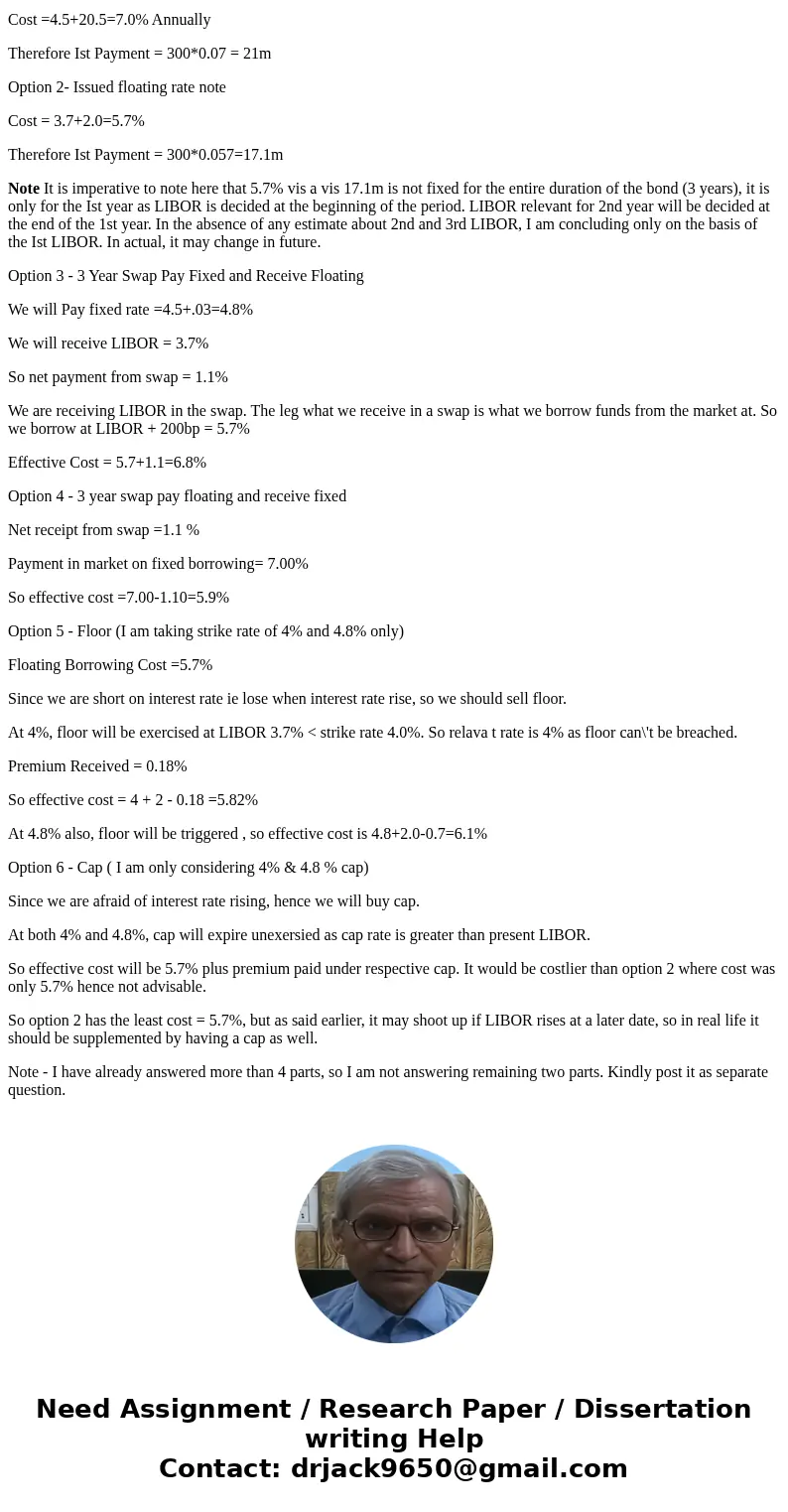Acme Manufacturing wants to raise 300 million of 3year debt
Solution
Greetings,
The question is about minimising the cost of funding via various alternatives including derivatives segment -
Option 1 - Issue Fixed Rate Note
Cost =4.5+20.5=7.0% Annually
Therefore Ist Payment = 300*0.07 = 21m
Option 2- Issued floating rate note
Cost = 3.7+2.0=5.7%
Therefore Ist Payment = 300*0.057=17.1m
Note It is imperative to note here that 5.7% vis a vis 17.1m is not fixed for the entire duration of the bond (3 years), it is only for the Ist year as LIBOR is decided at the beginning of the period. LIBOR relevant for 2nd year will be decided at the end of the 1st year. In the absence of any estimate about 2nd and 3rd LIBOR, I am concluding only on the basis of the Ist LIBOR. In actual, it may change in future.
Option 3 - 3 Year Swap Pay Fixed and Receive Floating
We will Pay fixed rate =4.5+.03=4.8%
We will receive LIBOR = 3.7%
So net payment from swap = 1.1%
We are receiving LIBOR in the swap. The leg what we receive in a swap is what we borrow funds from the market at. So we borrow at LIBOR + 200bp = 5.7%
Effective Cost = 5.7+1.1=6.8%
Option 4 - 3 year swap pay floating and receive fixed
Net receipt from swap =1.1 %
Payment in market on fixed borrowing= 7.00%
So effective cost =7.00-1.10=5.9%
Option 5 - Floor (I am taking strike rate of 4% and 4.8% only)
Floating Borrowing Cost =5.7%
Since we are short on interest rate ie lose when interest rate rise, so we should sell floor.
At 4%, floor will be exercised at LIBOR 3.7% < strike rate 4.0%. So relava t rate is 4% as floor can\'t be breached.
Premium Received = 0.18%
So effective cost = 4 + 2 - 0.18 =5.82%
At 4.8% also, floor will be triggered , so effective cost is 4.8+2.0-0.7=6.1%
Option 6 - Cap ( I am only considering 4% & 4.8 % cap)
Since we are afraid of interest rate rising, hence we will buy cap.
At both 4% and 4.8%, cap will expire unexersied as cap rate is greater than present LIBOR.
So effective cost will be 5.7% plus premium paid under respective cap. It would be costlier than option 2 where cost was only 5.7% hence not advisable.
So option 2 has the least cost = 5.7%, but as said earlier, it may shoot up if LIBOR rises at a later date, so in real life it should be supplemented by having a cap as well.
Note - I have already answered more than 4 parts, so I am not answering remaining two parts. Kindly post it as separate question.


 Homework Sourse
Homework Sourse